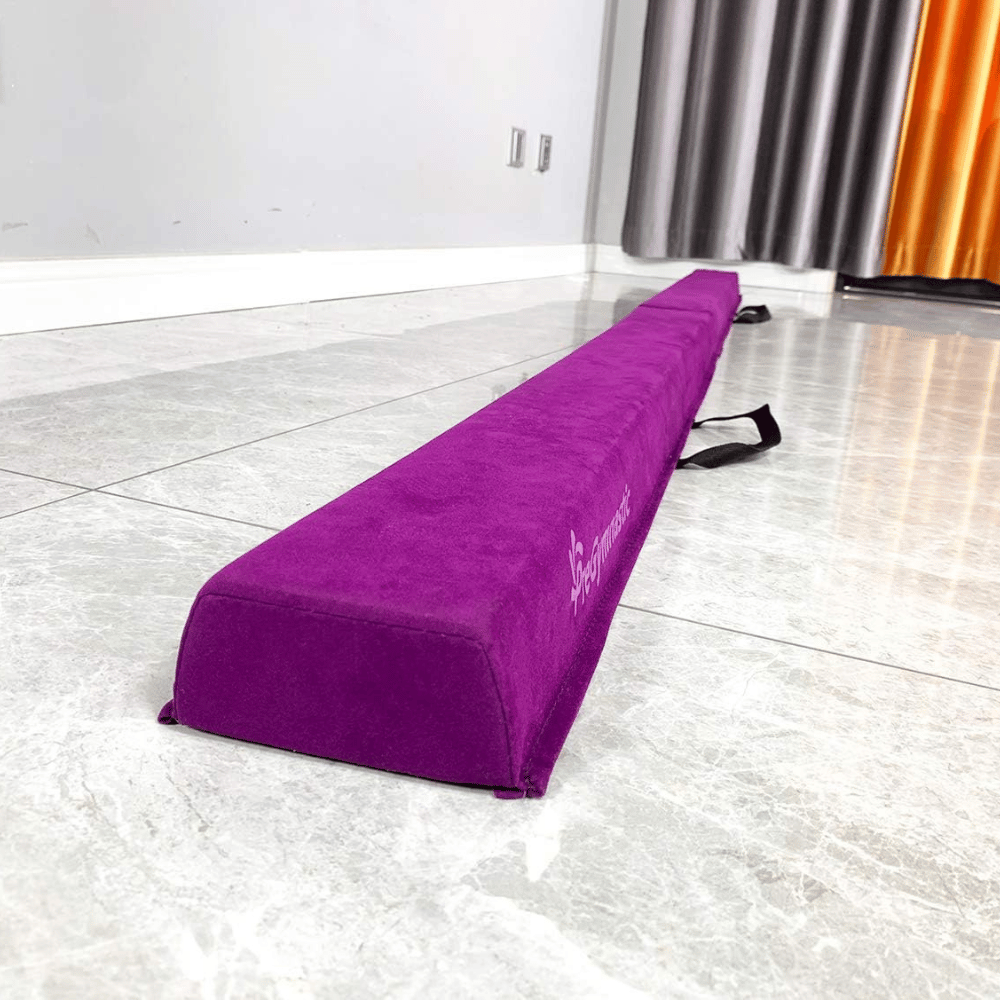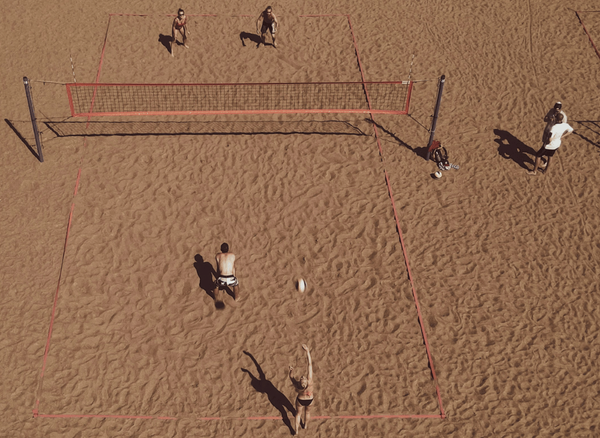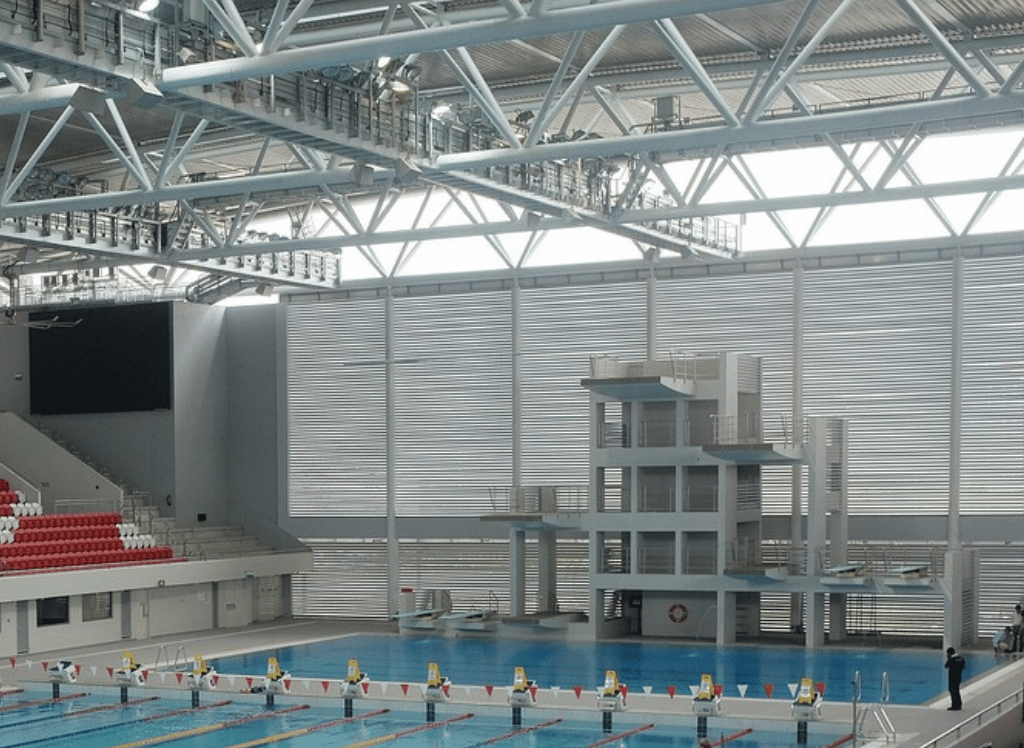The balance beams are those narrow, elevated beams designed to test and improve your balance, coordination, and gross motor skills. They come in many different ways, from wooden to steel beams with foam padding. The material and construction of the beam can impact its durability and weight capacity. For instance, wooden beams are often covered with carpeted surfaces or blue suede to provide a soft, non-slip surface. Steel beams, on the other hand, are known for their durability and can support a higher weight limit.
Types of Balance Beams
There are several types of balance beams, each designed for different skill levels and purposes. Competition beams are the gold standard in gymnastics, featuring a width of 4 inches and a length of 16 feet. These beams are covered with suede and have rubber end caps to protect the edges and provide additional support.
For those just starting, foam beams are a great option. These beams are soft and low to the ground, making them perfect for young children or beginners. They are also lightweight and easy to move, making them ideal for home use. Foam beams are often covered in bright colors like purple, blue, and pink, adding a fun element to the exercise. The following is an example of a kid's beam that lays on the floor.
Developing Balance and Coordination
Walking, jumping, and performing tricks on a narrow beam require a high level of control and precision. This helps improve gross motor skills and overall body coordination.
One of the most exciting aspects of using a balance beam is the creativity it encourages. Kids and adults alike can invent new skills and routines, from simple walks to complex flight series and leaps. This not only makes the exercise more engaging but also helps build confidence and control.
Safety First
When choosing a balance beam, it's crucial to consider its weight capacity and durability. Competition beams and steel beams generally have a higher weight limit, making them suitable for older children and adults. Wooden beams with foam padding are also durable but may have a lower weight capacity.
Rubber end caps and carpeted surfaces are essential safety features. They protect the edges of the beam and provide a non-slip surface, reducing the risk of falls and injuries. Always check the specifications of the beam to ensure it meets your needs and safety requirements.
Balance Beams for All Ages
Balance beams aren't just for serious gymnasts. They can be a fun addition to any play area. Kids love the challenge of balancing and performing tricks, and it’s a great way to burn off energy. Balance beams can be used in many different ways, from simple walks to imaginative play scenarios.
For younger children, foam beams are ideal. They are soft and low to the ground, reducing the risk of injury. Older kids and adults can enjoy more advanced beams, like competition beams or steel beams with foam padding. These beams offer a greater challenge and can support more weight, making them suitable for more intense training.
Setting Up Your Balance Beam
Setting up a balance beam is straightforward but requires some planning. First, ensure you have enough space. The beam should be placed on a flat, stable surface, and there should be plenty of room around it for safety mats. Mats are essential for cushioning falls and reducing stress on the joints.
Next, consider the arrangement of the beam. If you’re using a wooden beam or a steel beam, make sure it’s securely anchored to the floor.
Foam beams are lighter and can be easily moved, but they should still be placed on a stable surface. Always check the beam’s specifications for any additional setup requirements.
Training and Exercise
Balance beams are excellent for training and exercise. They help improve balance, coordination, and gross motor skills, making them a valuable addition to any fitness routine. Walking, jumping, and performing tricks on a beam require a high level of control and precision, providing a full-body workout.
For gymnasts, balance beams are essential for practicing routines and developing new skills. The narrow width and elevated height of the beam add an extra challenge, helping gymnasts build confidence and control. Even if you’re not a gymnast, balance beams can be a fun and effective way to stay active and improve your fitness.
Balance Beam FAQs
Please browse through the frequently asked questions section to learn more.
What is the ideal width for a balance beam?
The standard width for a competition balance beam is 4 inches. However, foam beams and beginner beams may have a wider surface to provide more stability.
How do I ensure my balance beam is safe to use?
Always check the weight capacity and durability of the beam. Ensure it has rubber end caps and a non-slip surface. Place the beam on a flat, stable surface and use safety mats around it.
Can adults use balance beams?
Yes, balance beams are suitable for all ages. Just make sure to choose a beam with a higher weight limit and appropriate specifications for adult use.
Summary
Balance beams are versatile and fun tools for developing balance, coordination, and gross motor skills. They come in various materials, lengths, and widths to suit different ages and skill levels. Whether you’re a serious gymnast or just looking for a fun way to exercise, balance beams offer a unique and engaging challenge.
Some of the links on this website may generate an affiliate commission, at zero cost to you. As an Amazon Associate, we earn from qualifying purchases. Your subscription and associate links helps make this site possible; and allows Gold Medal Ratings to exist. Thank you!









